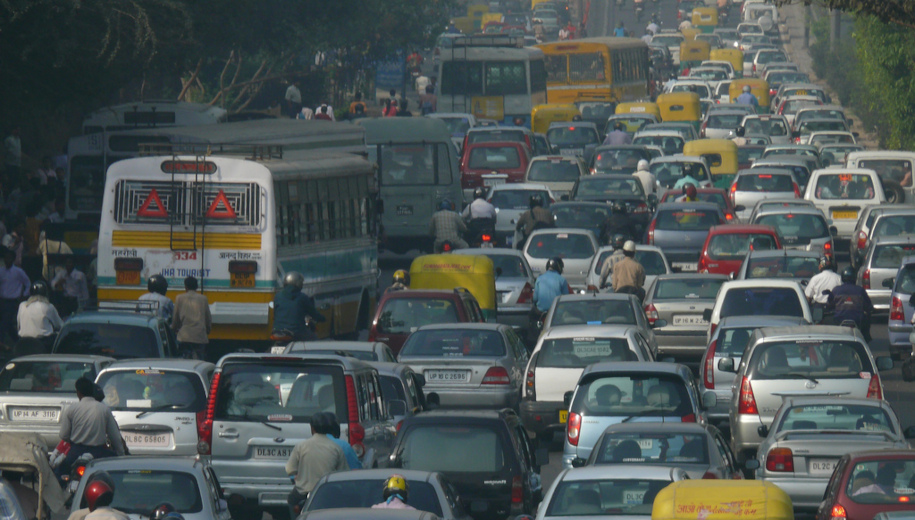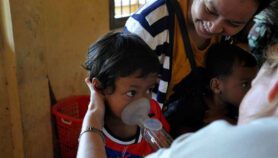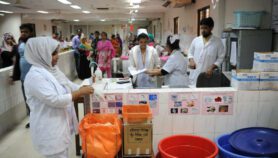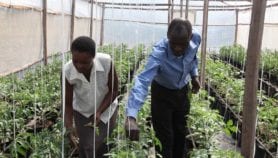寄给朋友
您在此页面上提供的详细信息将不会用于发送未经请求的电子邮件,也不会出售给第三方。请参阅隐私政策。
[新德里]印度和尼泊尔的致命粒子污染浓度最高,根据《全球AIR 2020年》的报告,问题只会越来越严重。
被称为PM2.5,直径小于2.5微米 - 小于人头发直径的30位,并且能够通过肺进入血液 - 由车辆,燃煤电厂,工业活动,浪费发射。燃烧和其他人类活动,例如烹饪。
10月21日报告将印度置于每立方米空气中以83.2微克浓度的高度暴露于PM2.5浓度的国家,然后是尼泊尔,每立方米的83.1微克。
谁是空气质量指南level for PM2.5 is only 10 micrograms per cubic metre. Niger, Qatar and Nigeria occupy the next top three places after Nepal.
“Long-term exposure to air pollution, especially PM2.5, is a serious but poorly recognised issue,” saysBhupendra Das,关于空气质量的研究人员Institute for Advanced Sustainability Studies, Potsdam, Germany andTribhuvan大学, Kathmandu, who was not involved in the study.
“South Asian countries — Bangladesh, India, Nepal and Pakistan — are mostvulnerable”。
According to the report, exposure to high concentrations of PM2.5 over several years has been the most consistent and robust predictor of mortality from cardiovascular, respiratory, and other types ofdiseases.
“Long-term exposure to air pollution, especially PM2.5, is a serious but poorly recognised issue. South Asian countries — Bangladesh, India, Nepal and Pakistan — are most vulnerable”
Bhupendra Das, Advanced Sustainability Studies and Tribhuvan University
该报告计算得出,2019年,印度的空中污染物在全球667万次空气污染死亡中造成了167万以上。
它说印度一直在稳步增加PM2.5pollutionover the past decade.
印度几乎所有13亿人都生活在PM2.5水平高于WHO指南的地区。尽管有尼泊尔广阔的喜马拉雅景观,但该国不远,其3000万人口中有98%的人口居住在超过WHO标准的地区。
Potsdam高级可持续发展研究所的DAS告诉SciDev.Netthat it is noteworthy that the report shows “the trend of ambient air pollution increasing in South Asia, whereas indoor or household air pollution seems to be declining”.
“从我自己的研究中,我可以说,南亚的PM2.5的增加主要是由于vehicular排放,固体废物开放燃烧,庄稼Das说:“残留的开放燃烧,燃煤电厂,砖窑,工业活动以及其他人为和自然来源。”
“It is important to note factors like lack of legal mandate to implementenvironmentalpolicies、缺乏行动计划或策略, lack of better air quality management plan, low-grade vehicle engines, insignificant proportion of efficient and smart technologies, and [the fact that] concerns and actions [are] limited to cities only,” Das says.
该报告 - 由美国发布健康影响研究所和国际研究计划Global Burden of Disease— relied on数据从地面监视器和遥感卫星到估计平均PM2.5暴露。
Globally, of 87 health risk factors, air pollution stood fourth after high blood pressure, tobacco and diet.
但是,印度确实减少了暴露于家庭空气污染的人数,主要是通过补贴清洁烹饪燃料的补贴。在过去的十年中,印度将暴露于家庭空气污染的人口从73%减少到61%,而中国将相应的减少量从54%减少到36%。
The good news is that although Asia, Africa and the Middle East saw the highest annual average exposures to PM2.5 last year, 14 out of the 20 most populous countries of the world experienced a drop in levels of the pollutant. But “countries with some of the highest exposures in the world — India, Pakistan, and Bangladesh — continue to see increases”, the report said.
在全球范围内,2019年估计有476,000名婴儿因空气污染而死亡。“在撒哈拉以南非洲和南亚出生的婴儿的新生儿死亡率最高,可归因于空气污染,从9,000至100,000个活生生,”报告说。
Mukesh Sharma, professor and specialist in environmental engineering at the印度技术学院at Kanpur, India, who was not involved in the report, tellsSciDev.Net用LPG代替木材,农作物,煤炭和粪便来烹饪和消除柴油发电的是“柔软的选择”,可降低PM2.5的慢性毒性,根据资料来源,这有所不同。
A学习Sharma及其同事于4月在德里进行的化学层,在道路粉尘,车辆排放,煤炭,粪便,木材和煤炭发电厂中显示出高毒性,由于存在重金属以及砷和一氧化碳而具有高毒性。
This piece was produced by SciDev.Net’s Asia & Pacific desk.















